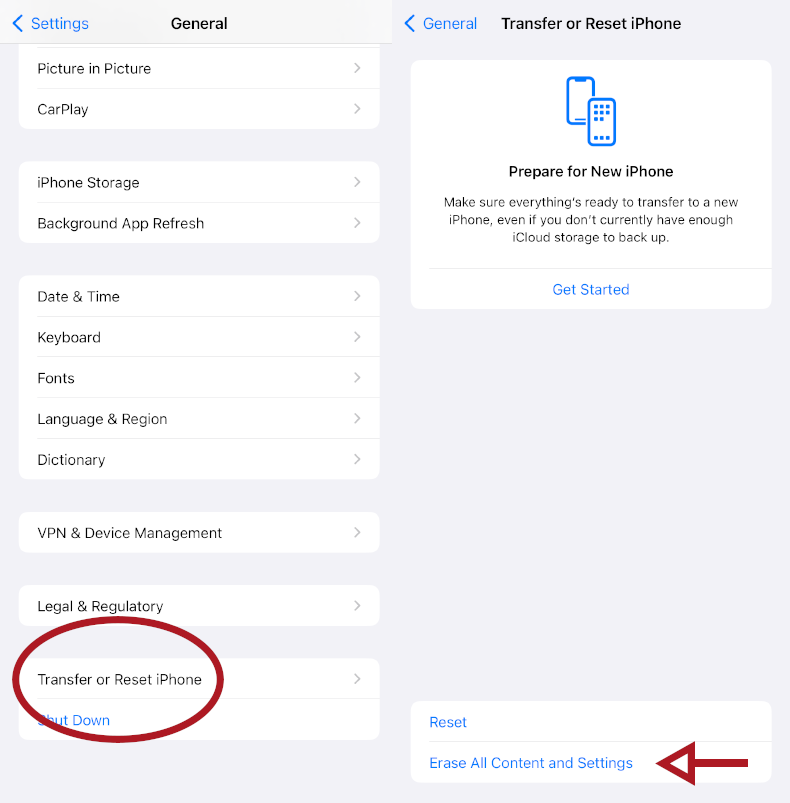The thrill of buying a new phone and unboxing that clean and slick veneer is electric. But before you get carried away with the long lasting battery life and shiny new features. Saying goodbye to your old phone means making sure it’s properly cleaned or any personal data. Failing to clean up your phone before disposing of it can leave sensitive data exposed to hackers, identity thieves, or anyone who comes across it next.
Here’s a comprehensive guide to cleaning up your phone before disposal to protect your privacy.
Why is Scrubbing Your Phone Clean Essential?
Modern smartphones store an incredible amount of personal information. In the same way that if your phone was lost or stolen, all of the information that it holds can be stolen, including your identity. It really would be like winning the jackpot for personal data.
According to the Federal Trade Commission, the information found on your phone is considered some of the most private and sensitive out there. This is even why law enforcement officials require a subpoena to be able to access it.
A lot of our apps stay logged in, or even more worrying need no log in at all, so this gives anyone with malicious intent the ability to access everything the device holds. Depending upon the locks and privacy settings on your phone, anyone with the right tools and know how can get to the information.
The following information is held by your phone and can even be retrieved by relatively skilled attackers.
- Face ID data
- Financial information for banking apps or wallets
- Contacts with names, phone numbers, addresses and email addresses
- Any linked email accounts (with access to your email inbox, anyone can reset your passwords and lock you out of every account you own!)
- All of your messages across multiple apps
- Social media accounts
- Photos, videos, and personal documents
- Any written notes
- Wi-Fi passwords for networks you have previously connected to
- Location history including any saved destinations like your home address
- Login information saved in browsers and apps
Without a proper cleanup, this data could fall into the wrong hands, leading to identity theft or other severe privacy breaches.
Steps to Safely Clean Up Your Phone
1. Back Up Your Data
The first step to take before wiping your phone, is to back up any important information you want to keep. We offer a secure online drive solution for both Android and iPhone that can back up your contacts, photos and files.
Having a backup ensures you won’t lose valuable data when you reset the device.
2. Sign Out of Accounts
Manually sign out of all accounts connected to your phone, including:
- Email accounts
- Social media accounts
- Web browsers
- Cloud storage
- Subscription services (Netflix, Spotify)
This step prevents the next user from accessing your accounts.
3. Transfer any 2FA (Two Father Authentication) application information
A fault with apps that are used for 2Factor Authentication is that the codes that are generated are stored. The codes need to be imported from your old phone, typically by scanning a QR code shown on the screen with a transfer request.
If this step is forgotten, it’s not guaranteed that your new phone will have access to all the codes, and then logging into accounts with the missing 2FA protection will prove difficult.
4. Perform a Factory Reset
A factory reset erases all data and restores the phone to its original settings.
Here’s the steps on how to do it for the device that you own:
Android: Go to Settings > System > Reset Options. From here you can choose to Reset different settings. For disposing of your cell phone, you will want to select Erase All Data (Factory Reset).

iPhone: Go to Settings > General > Transfer or Reset iPhone. From here Apple will assist you ‘Get Started’ with the transfer to a new phone, or you can skip and go straight to Erase All Content and Settings.

This step ensures no personal information remains on the phone.
Are You Recycling Your Phone?
Did you know that around 80% of the material within a modern cell phone can be recycled? This includes all the metal materials, plastic and glass.
Electronic waste is a growing environmental concern. Recycling your phone ensures that valuable materials like metals and plastics are reused, reducing the impact on the planet.
If you’re recycling or donating your device:
- Check Local Recycling Programs: Look for certified e-waste recycling centers or programs offered by manufacturers and carriers.
- Follow All The Above Steps: Ensure you follow all of the steps above to remove your personal data from the phone.
- Remove SIM and SD Cards: Take out your SIM card and any external storage to avoid leaving personal data behind.
- Include Accessories: If donating, consider including the original charger and any other accessories to help the next user.
Disposing of your old phone doesn’t have to be stressful. By following these steps, you can ensure your personal information is secure and your device is ready for its next use. you can ensure your personal information is secure and your device is ready for its next use.




